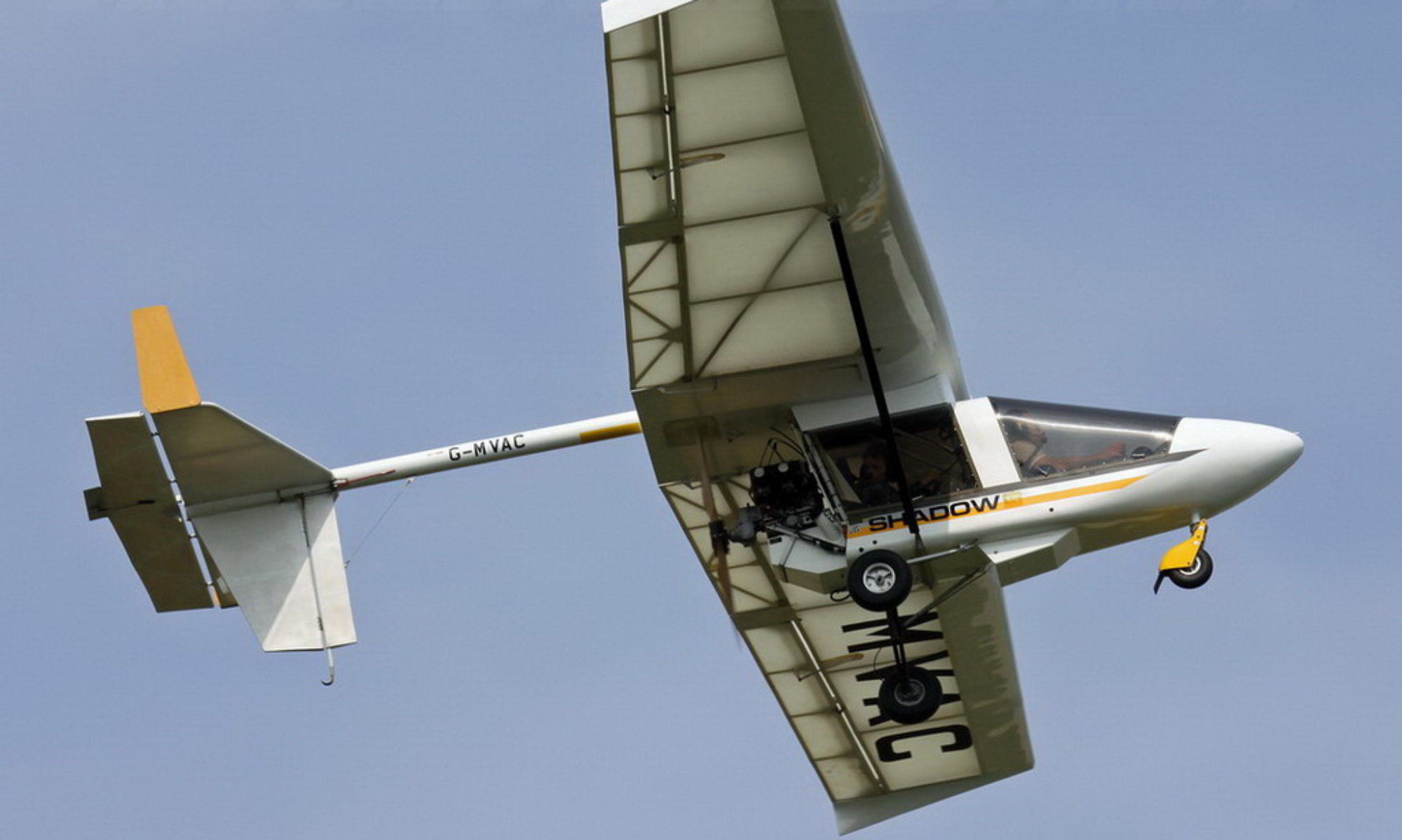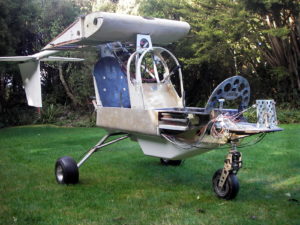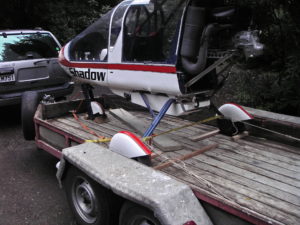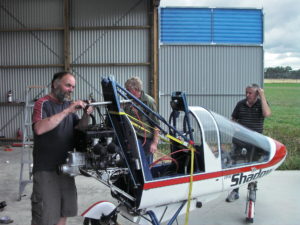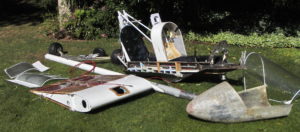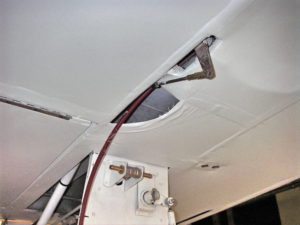 Now completed the covering of the wing’s centre section.
Now completed the covering of the wing’s centre section.
With the help of my brother-in-law and his wife, we flipped the fuselage/wing centre upside down (and carried it back into the workshop) so I could work on the underside of the wing stub. It was very easy to cover it with lightweight Poly-Fiber fabric and then gently heat shrink it smooth. I was pretty pleased with the zipped access panels that I’d sewn in before gluing the fabric on.
The brushed-on sealing coat was Wattyl “Solagard Gloss” water-based roof paint (with Floetrol conditioner) thinned with BarsBugs. This flows across and through the weave, gripping the polyester fibres much better than conventional fabric sealers. Next were several sprayed coats of Solagard Gloss/Floetrol thinned with water.
My brother and I carried the inverted fuselage/wing centre out of the workshop and flipped it back onto its wheels. Then, I could cover the top surface of the wing’s centre section. It took some ingenuity to sew and glue fabric shelves along each side of the tail boom, so that I could eliminate the foam shapes that normally surround the boom as it exits the centre section.
I also fitted the underwing luggage locker. It’s a hinged divinycell tub, which can hold a sleeping bag and small tent. In the open position it give easy access for connecting the port-side aileron pushrod. When its closed the luggage is prevented from fouling the pushrod. The starboard-side aileron pushrod is accessed thru the zips mentioned above. There is a 28 litre fuel tank above and aft of the pushrod, which more than doubles the Shadow’s range.
